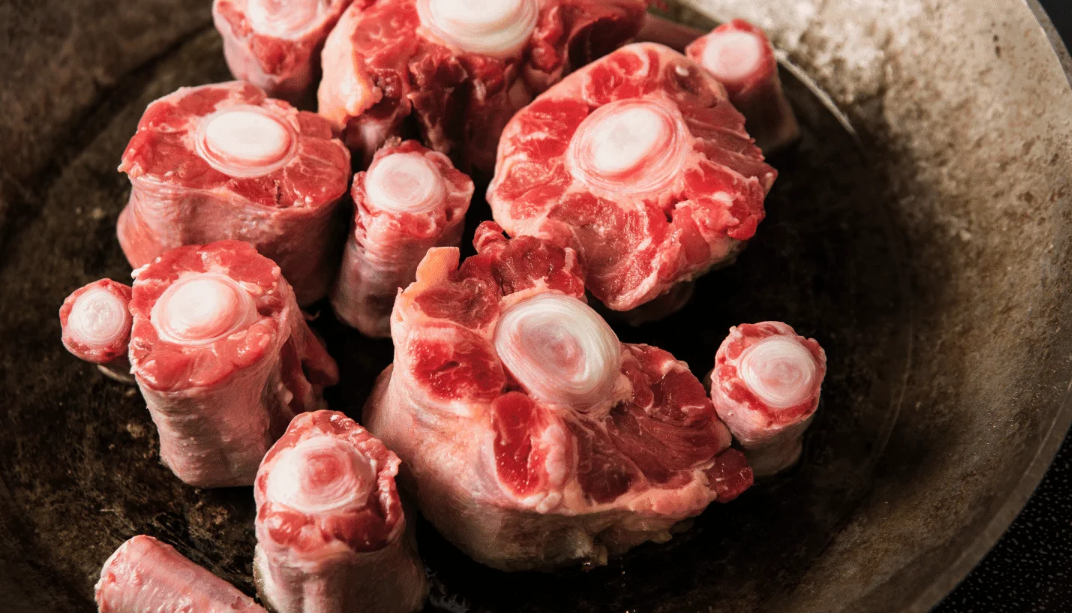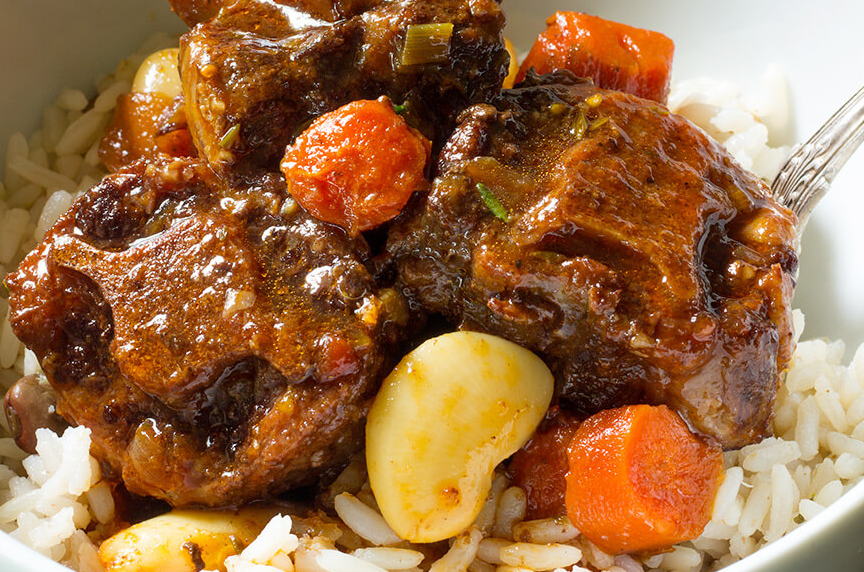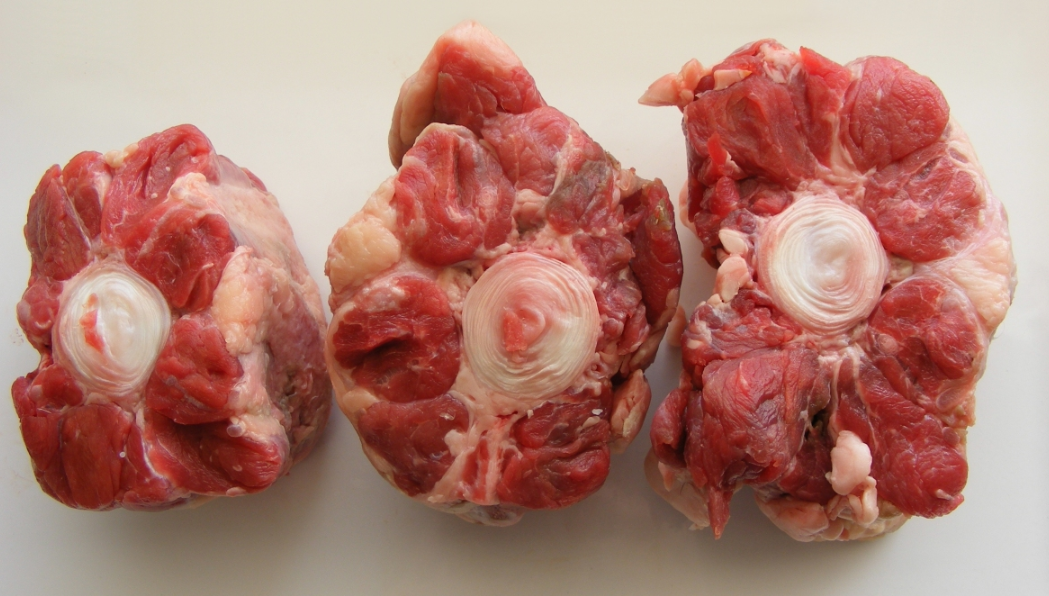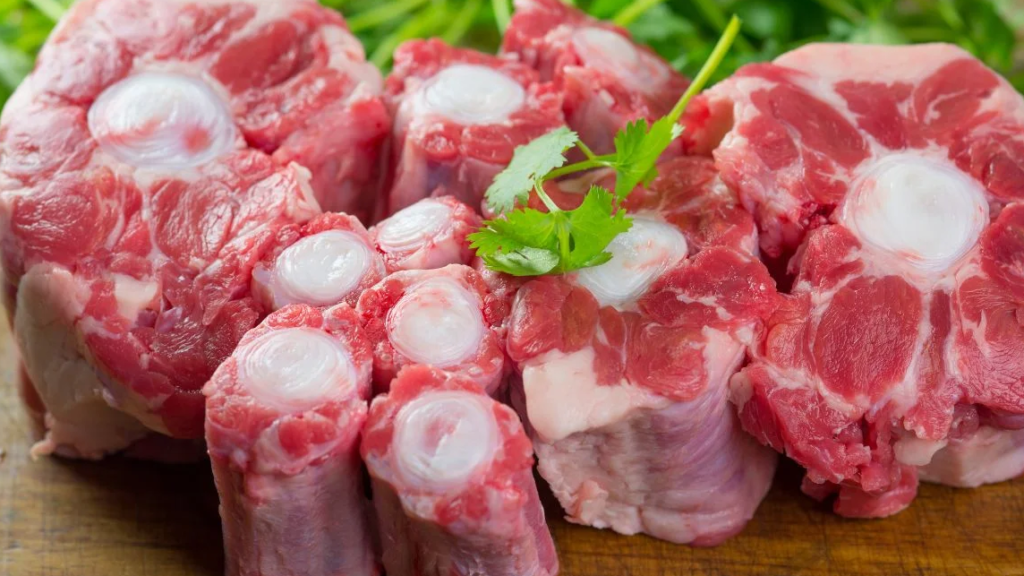High blood pressure, a silent epidemic affecting millions worldwide, necessitates dietary tweaks to manage and prevent complications. While some foods like leafy greens and berries earn a gold star for their blood pressure-lowering properties, others, like the rich and flavorful oxtail, raise eyebrows concerning their suitability.
So, is oxtail good for high blood pressure? Let’s simmer down and unearth the facts regarding oxtail’s relationship with high blood pressure.
Nutritional Breakdown
Oxtail, the bony tail of cattle, boasts a unique nutritional profile. It’s a significant source of:
- Protein: A single 3-ounce serving packs a whopping 24 grams of protein, essential for building and repairing tissues.
- Collagen: This abundant protein contributes to skin health, joint support, and gut integrity.
- Iron: Oxtail excels in iron content, vital for oxygen transport and preventing anemia.
- B vitamins: These vitamins play crucial roles in energy metabolism, nervous system function, and red blood cell production.
However, oxtail also harbors potential downsides for those with high blood pressure:
- Saturated fat: A 3-ounce serving contains roughly 10 grams of saturated fat, exceeding the recommended daily intake for individuals with hypertension. High saturated fat intake can elevate LDL (“bad”) cholesterol levels, contributing to plaque buildup in arteries and increasing blood pressure.
- Sodium: Depending on preparation methods and added seasonings, oxtail can be laden with sodium. Excessive sodium intake is a major culprit in high blood pressure.
Cooking Methods Matter
The way you prepare oxtail significantly impacts its healthfulness. Here’s how to navigate the culinary landscape:

- Slow cooking: Opt for slow-cooking methods like stewing or braising. These techniques allow time for collagen to break down, tenderizing the meat and reducing the need for excess fat or sodium.
- Trim the fat: Before cooking, remove any visible fat deposits to minimize saturated fat intake.
- Go easy on the salt: Use low-sodium broths and seasonings to control sodium content. Experiment with herbs and spices like garlic, ginger, and thyme for added flavor without relying on salt.
- Pair it wisely: Balance a rich oxtail dish with plenty of low-sodium vegetables and whole grains. This approach adds fiber and essential nutrients while diluting the overall sodium and fat impact.
Exploring Healthy Alternatives
While oxtail can be enjoyed occasionally as part of a balanced diet, consider these alternatives for more regular meals:
- Lean protein sources: Opt for skinless chicken breast, fish, or beans as primary protein sources.
- Plant-based proteins: Explore lentils, chickpeas, tofu, and tempeh for heart-healthy, protein-rich alternatives.
- Fruits and vegetables: Load up on a rainbow of fruits and vegetables, rich in antioxidants and fiber, which help regulate blood pressure.
- Whole grains: Choose whole-wheat bread, brown rice, or quinoa over refined grains for sustained energy and improved blood sugar control.
Oxtail, with its complex flavors and rich collagen content, can be a delightful occasional treat. However, for individuals with high blood pressure, moderation and mindful preparation are key. Prioritize slow-cooking methods, trim excess fat, control sodium, and pair your oxtail dish with plenty of low-sodium vegetables and whole grains. Remember, a balanced diet rich in fruits, vegetables, whole grains, and lean protein sources is your best bet for managing hypertension and promoting overall cardiovascular health.
Creative Oxtail Recipes
Ready to experiment with oxtail in a heart-healthy way? Here are some recipe inspirations:

- Slow Cooker Korean Oxtail Stew: This flavorful stew incorporates kimchi, ginger, and gochujang for a spicy kick, simmered with low-sodium broth and vegetables.
- Italian Oxtail Braise with Pappardelle: This classic dish features tender oxtail bathed in a rich tomato sauce with herbs and spices, served over whole-wheat pappardelle pasta.
- Jamaican Oxtail Soup: This aromatic soup combines oxtail with kidney beans, plantains, and a blend of Caribbean spices for a satisfying and nutritious meal.
READ: Can You Take Collagen with High Blood Pressure Medication?
Global Oxtail Delicacies
Oxtail’s culinary versatility extends far beyond the borders of any single cuisine. From the rich stews of Europe to the fiery curries of Asia, this cut of meat takes on a kaleidoscope of flavors and textures, captivating palates worldwide. Let’s embark on a culinary journey through some of the most mouthwatering oxtail dishes from around the globe:
- Italy: The Italian rendition of oxtail, coda alla vaccinara, is a symphony of slow-cooked tenderness. Bathed in a rich tomato sauce infused with celery, carrots, and onions, the oxtail melts in your mouth, releasing bursts of savory goodness. Pair it with a side of creamy polenta for a truly comforting meal.
- Jamaica: Jamaican oxtail takes on a spicy and flavorful twist in the form of oxtail stew. This vibrant dish features tender oxtail simmered in a fragrant broth brimming with Scotch bonnet peppers, allspice, thyme, and ginger. Served with rice and peas, it’s a fiery fiesta for your taste buds.
- Korea: Korean soegogi guksu, or oxtail noodle soup, is a heartwarming and nourishing dish. The oxtail is slow-cooked in a deeply flavorful broth infused with kelp, garlic, and Korean pears, resulting in a tender and melt-in-your-mouth texture. Thin wheat noodles add a delightful springiness to the soup, making it a perfect comfort food on a chilly day.
- France: French queue de boeuf is a classic culinary masterpiece. The oxtail is braised in red wine with vegetables and herbs, resulting in a rich and decadent dish with a hint of sweetness. Traditionally served with mashed potatoes, it’s a luxurious and satisfying meal fit for a special occasion.
- Vietnam: Vietnamese bò hầm is a fragrant and flavorful oxtail stew. The oxtail is simmered in a lemongrass-infused broth with star anise, cinnamon, and black pepper, creating a complex and aromatic symphony of flavors. Served with rice vermicelli and a side of fresh herbs, it’s a light and refreshing take on the classic oxtail dish.

These are just a few examples of the many ways oxtail can be enjoyed around the world. Each region infuses its unique cultural influences and culinary traditions into this versatile cut of meat, creating a diverse and delicious tapestry of flavors.
So, the next time you’re looking for a culinary adventure, consider venturing beyond the familiar and exploring the world of oxtail. You might just discover your new favorite dish!
Conclusion
Oxtail, with its rich flavor and unique nutritional profile, offers a tempting culinary adventure. However, for individuals with high blood pressure, navigating its potential downsides requires a mindful approach.
By prioritizing moderation, portion control, vegetable pairings, and healthy cooking methods, you can savor the occasional oxtail indulgence without compromising your well-being. Remember, a balanced diet rich in fruits, vegetables, whole grains, and lean protein sources remains the cornerstone of managing high blood pressure. Oxtail, when enjoyed thoughtfully and in moderation, can be a delightful occasional addition to your healthy eating plan.
Beyond the plate, remember that a holistic approach incorporating lifestyle modifications like regular exercise, stress management, and weight management is essential for optimal blood pressure control. So, embrace a balanced and mindful approach, explore the world of oxtail flavors responsibly, and prioritize your health with every delicious bite.
Resources & References
- American Heart Association: https://www.heart.org/
- National Institutes of Health: https://www.nih.gov/
- Mayo Clinic: https://www.mayoclinic.org/
- Cleveland Clinic: https://my.clevelandclinic.org/
FAQs – Oxtail & High Blood Pressure
Is oxtail good for high blood pressure?
Oxtail isn’t inherently bad for high blood pressure, but it’s important to enjoy it mindfully due to its saturated fat and sodium content. Moderate consumption (once or twice a month), focusing on small portions, and pairing it with plenty of vegetables can help offset these concerns.
What makes oxtail bad for high blood pressure?
High saturated fat and sodium are the main culprits. A 3-ounce serving contains roughly 10 grams of saturated fat and can be high in sodium depending on preparation methods. Both can contribute to elevated blood pressure, especially for individuals at risk.
How can I cook oxtail in a way that’s healthier for high blood pressure?
Opt for slow-cooking methods like stewing or braising to render fat and reduce the need for extra salt. Trim visible fat before cooking and go easy on added sodium. Pair your oxtail dish with low-sodium vegetables and whole grains for a balanced meal.
Are there healthy alternatives to oxtail for people with high blood pressure?
Absolutely! Lean protein sources like skinless chicken breast, fish, or beans are excellent alternatives. Consider plant-based options like lentils, chickpeas, tofu, and tempeh for protein-rich, heart-healthy choices.
Can I completely avoid oxtail if I have high blood pressure?
While moderation is key, you don’t necessarily have to banish oxtail entirely. Occasional indulgence is fine, as long as it’s part of an overall balanced diet rich in fruits, vegetables, and whole grains.
Are there any health benefits to eating oxtail?
Yes! Oxtail boasts protein, collagen, iron, and B vitamins. Collagen can benefit joint health, iron supports oxygen transport, and B vitamins play crucial roles in metabolism and nervous system function. However, enjoy these benefits alongside mindful consumption to manage its potential downsides.


